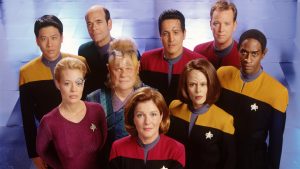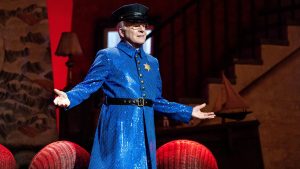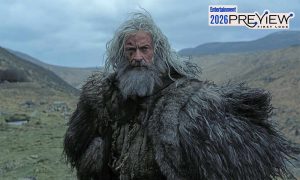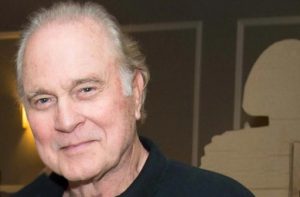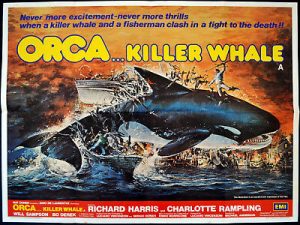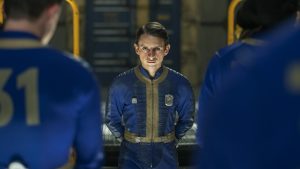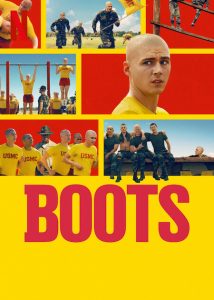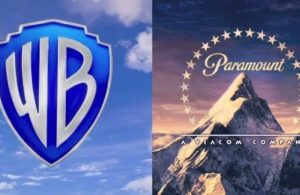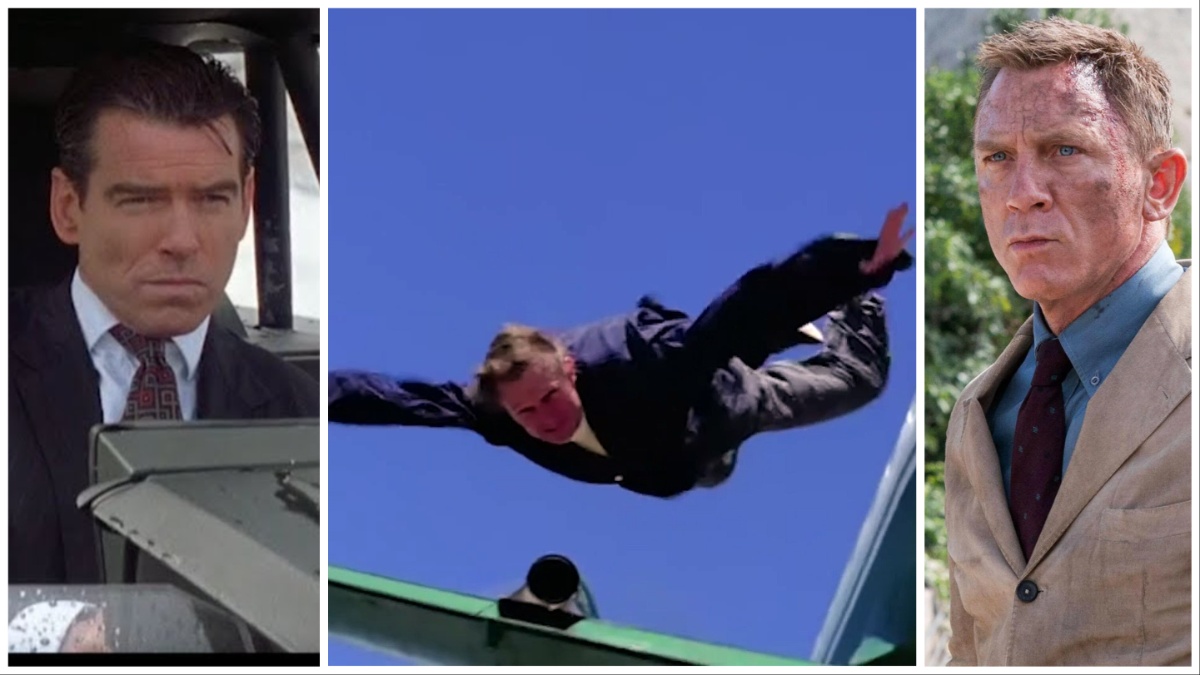
The James Bond franchise revolutionized action cinema in the 1960s when it started with 1962’s Dr. No and stands to this day as one of the longest-running film series in history. From almost the very beginning, Bond movies strive to draw in their audiences with high-octane prologues that run before lush and stylishly rendered title sequences. These pre-title action scenes not only set the tone for the movie right out the gate but, in several instances, are the best sequences within their respective films.
This pre-title sequence tradition began with the franchise’s second movie, 1963’s From Russia with Love. Believe it or not, Dr. No does not actually contain a pre-title action scene and instead dives headfirst into its opening titles. These prologues highlight the classic elements of a spy who always served Her Majesty’s Secret Service faithfully. They also showcase how each of the actors playing Bond differ in their approach to the iconic role.
24. Live and Let Die (1973)
The very first James Bond movie starring Roger Moore, 1973’s Live and Let Die, doesn’t even feature in the opening action sequence. The movie instead uses its first scene to set up the larger mystery in the film’s narrative: British operatives in New Orleans, at the United Nations headquarters in New York City, and the fictional Caribbean island nation of San Monique are murdered in various ways. The only major characters introduced in this trio of scenes is the film’s primary antagonist, Dr. Kananga (Yaphet Kotto) and his clairvoyant associate Solitaire (Jane Seymour).
With Bond absent and the familiar trappings of a Bond movie not readily apparent in the film’s opening, Live and Let Die has the most forgettable pre-title sequence in the franchise. The movie’s handling of racial stereotypes and attempt to co-opt blaxploitation cinema really dates this film as well, arguably more overtly than any other installment. Moore started his lengthy tenure as Bond on a more awkward note than most and that’s apparent right from the get-go.
23. The Man with the Golden Gun (1974)
Moore’s sophomore outing as Bond, in 1974’s The Man with the Golden Gun, is another one of his weaker entries, though its pre-title sequence is marginally better than Live and Let Die. The opening has a mobster travel to a remote island off the coast of China where he engages in a deadly cat-and-mouse game in the home of legendary assassin Francisco Scaramanga (the great Christopher Lee). Scaramanga’s compound is built like a funhouse, disorienting his prey before the master moves in for the kill.
For two movies in a row, Moore’s Bond doesn’t technically appear in the pre-title sequence, though Moore does silently double for a life-like wax figure of Bond in Scaramanga’s inner sanctum. The big thing that puts The Man with the Golden Gun’s opening over Let and Let Die is Lee’s charismatic portrayal as Scaramanga; he remains the best thing in the entire film. But the odd decision to distance Bond from the opening scene and lean into camp with Scaramanga’s funhouse starts this movie off on the wrong foot.
22. A View to a Kill (1985)
I promise we’ll stop slagging on Roger Moore’s Bond movies soon enough, but plenty of those films’ pre-title sequences are among the franchise’s worst. Moore’s last outing as 007 was 1985’s A View to a Kill, which pitted 007 against a pair of villains memorably played by Christopher Walken and Grace Jones. Unfortunately, neither of these antagonists appear in the movie’s opening. Instead we see Bond retrieve a microchip from a fallen 00 Agent in Siberia where he is pursued by the Soviet military.
Though a fair amount of Bond’s scenes in the opening to A View to a Kill are played by a stuntman due to the wintry stunts, whenever Moore does appear onscreen, his advancing age is visible. Moore was 58 years-old when A View to a Kill was released, playing opposite love interests half his age. By his own subsequent admission, he’d overstayed his welcome. Between Moore’s age and a laughably campy sequence involving Bond snowboarding to the tune of the Beach Boys’ “California Girls,” A View to a Kill begins on a tepid note that it never recovers from.
21. Die Another Day (2020)
Moore isn’t the only Bond star to end his tenure on a whimper, with Pierce Brosnan closing out his run as 007 on his weakest film in the series, 2002’s Die Another Day. This time Bond infiltrates North Korea to stop the military regime from acquiring experimental weapons that would launch an ambitious attack on South Korea. 007 is subsequently captured and tortured during the film’s actual title cards sequence (a first for the series that has otherwise avoided using those pop music-infused sequences to advance the plot). Prior to that, however, Bond uses a surfboard loaded with his usual gear to slip into North Korea undetected.
The idea that surfing would make Bond look cool and appealing to younger audiences in 2002 is just as hilariously out-of-touch as the movie’s random use of slow-motion and a techno-flavored Madonna song. Ridiculous opening stunt aside, all of the North Korean sequences in the film are shown in a drab gray color scheme, which is some of the most uninviting cinematography in the entire series. Die Another Day is the most glaring example of the franchise trying too hard to stay relevant as it entered the 21st century, and even its opening scene is guilty of this unfortunate trend.
20. Diamonds Are Forever (1971)
After a four year-hiatus, Sean Connery returned to the role of Bond for 1971’s Diamonds Are Forever, his final farewell to the official franchise produced by Eon Productions. The movie opens with Bond mercilessly attacking the associates of villainous mastermind Ernst Stavro Blofeld (now recast as Charles Gray) in retaliation for the murder of his wife Tracy. This culminates in Bond derailing an attempt to create a Blofeld doppelganger. Bond then seems to confront his arch-nemesis in a final and anticlimactic showdown.
It’s clear from the jump that Connery’s heart isn’t entirely in reprising his most iconic role in Diamonds Are Forever. More amused than driven or vengeful, despite pursuing a presumed vendetta, Connery drifts from scene to scene without much gravitas. The opening battle with Blofeld and SPECTRE similarly lacks the energy of Connery’s other pre-title sequences, signaling what would be a lackluster swan song as Eon Productions’ 007.
19. On Her Majesty’s Secret Service (1969)
The first Bond film without Connery was 1969’s On Her Majesty’s Secret Service, which marked Australian actor George Lazenby’s sole turn as the legendary British secret agent. The movie opens with Bond on a global manhunt for Blofeld after their fateful first meeting in You Only Live Twice. Along the way, Bond stops Countess Tracy di Vicenzo (Diana Rigg) from committing suicide while dispatching two of her father’s goons.
Everything right and wrong with On Her Majesty’s Secret Service is on display in the opening sequence, especially in regard to Lazenby’s performance as James Bond. Lazenby brings plenty of energetic physicality that Bond hadn’t demonstrated in years, putting his full body weight behind every blow. At the same time, his delivery of the iconic “Bond, James Bond” line falls flat. An underrated entry in the franchise, On Her Majesty’s Secret Service lets viewers know right from the start that they’re in for something different—and perhaps not in the way they wanted in ‘69.
18. Octopussy (1983)
Roger Moore’s penultimate outing as Bond was 1983’s Octopussy, released the same year as Connery’s non-Eon produced Bond film, Never Say Never Again. The opening to Octopussy has Bond infiltrate the unveiling of an experimental aircraft in an unidentified Latin American dictatorship. This escalates to Bond being pursued as he pilots the Acrostar, a small, single-seat aircraft capable of high speeds and nimble maneuvering.
Moore is at his best in Octopussy in the opening scene, blending charm and humor as effortlessly as ever in a relatively low-stakes prologue. The Acrostar is the highlight of the pre-title sequence, although it isn’t on-screen all too much. The opening to Octopussy is serviceable enough, with nothing too memorable but adequately delivered as Moore’s tenure as Bond nears its end.
17. You Only Live Twice (1967)
Connery’s original farewell to the role that made him an international icon was 1967’s You Only Live Twice, which places Bond undercover for a mission in Japan. This mission surfaces after an American spacecraft is captured by a larger spaceship while orbiting the Earth, resulting in the death of an astronaut. To help lull SPECTRE into a false sense of security, Bond fakes his death in the pre-title sequence, apparently gunned down in the midst of a romantic interlude in Hong Kong.
The space sequences are one of the elements of You Only Live Twice that have aged the worst—outside of Bond bizarrely disguising himself to appear as a Japanese man. The faked death is played relatively straight in the prologue, leaving the audience to wonder what is going on until it’s immediately resolved after the opening titles. Also Connery’s growing distaste for playing Bond becomes visibly apparent in this movie for the first time, including Bond’s introduction in the film.
16. Licence to Kill (1989)
Timothy Dalton’s final appearance as Bond was 1989’s Licence to Kill, one of the most intense and violent movies in the franchise to date, and the first ever to be rated PG-13. The opening has Bond prepare to serve as the best man for his CIA friend Felix Leiter’s wedding, only to be roped into apprehending powerful drug lord Franz Sanchez (Robert Davi), visiting the Florida Keys. Suspended from a helicopter, Bond ties up Sanchez in his private aircraft before skydiving with Felix into his wedding.
The pre-title sequence is the goofiest part of Licence to Kill, a movie which includes ninjas in Latin America and a man’s head inflating and exploding like a gory balloon. Still, Davi conveys plenty of menace in his introduction as Sanchez, even as the villain is unceremoniously lassoed midair by another plane. A much darker movie follows the opening titles than the prologue hints at. As Licence to Kill begins, an era for the franchise comes to an end.
15. The World Is Not Enough (1999)
The second-longest pre-titles sequence for the series belongs to 1999’s The World Is Not Enough, which marked Pierce Brosnan’s third appearance as Bond. The film opens with 007 recovering intended ransom money for a personal friend of M’s from Bilbao, Spain before learning it was an elaborate scheme to kill the friend in question with an implanted bomb. As MI6 recovers from the blast within its own corridors, Bond pursues the assassin across London’s Thames River before injuring himself atop the Millennium Dome.
The World Is Not Enough has a solidly crafted prologue, setting the stakes out the gate, but it never quite feels like it justifies its prolonged length. Bond’s boat chase on Thames doesn’t really have the high-octane punch that the filmmakers were likely hoping for. Brosnan is in fine form, but The World Is Not Enough doesn’t have strong material for him as the formula starts to wear thin.
14. The Living Daylights (1987)
Timothy Dalton’s debut as Bond came in 1987’s The Living Daylights, with the movie acting as a decided counterpoint to the goofier films in the series starring Roger Moore, which occasionally bordered on self-parody. A routine training mission of 00 agents in Gibraltar is murderously disrupted by an assassin targeting trainees with an apparent message from the Soviet Union. Bond intercepts the assassin in an explosive chase around the island, managing to parachute safely as the killer perishes in his stolen truck full of volatile ordinance.
In contrast to On Her Majesty’s Secret Service and Live and Let Die, which awkwardly handle their respective introductions of new on-screen Bonds, The Living Daylights pulls off the unveiling of Dalton well. Like his depiction of Bond, the reveal is understated and organic before wasting no time in thrusting Dalton’s 007 into action. In contrast to Moore’s movies, the action is more grounded, perhaps too much. It avoids coming off as overly flashy but lacks the sense of spectacle that came with the Moore era.
13. From Russia with Love (1963)
The sophomore Bond movie, 1963’s From Russia with Love, is the first to include a pre-title sequence as the franchise formula continued to take shape. In this prologue, Bond is evidently stalked through a garden with an extensive hedge maze by a deadly assassin who has a garrote wire hidden in his wristwatch. As the assassin, Red Grant (Robert Shaw) strangles Connery’s Bond seemingly to death! But oho, the secret agent is revealed to be a SPECTRE agent in disguise as part of an elaborate and lethal training exercise for Grant!
For fans who are more used to later films in the series and not as familiar with ‘60s cinema, From Russia with Love still has the growing pains of a franchise finding itself. Though tensely constructed, the premise of the 007 appearing in the scene being a masked double understandably takes away the charm and personality of the series. Couple this with an awkwardly sped-up effect as Grant kills his prey, and you’re left with an odd opening.
12. Thunderball (1965)
The James Bond franchise was at the height of its cultural ubiquity with the release of 1965’s Thunderball, the highest-earning Bond film for decades. In the opening, Bond tracks down a SPECTRE operative who murdered one of his colleagues, finding him hiding out in his chateau after faking his death and posing as his own widow. Upon finishing off the SPECTRE agent for good, Bond escapes from the chateau with aid of a jetpack and his gadget-laden Aston Martin!
By his fourth outing as Bond, Connery has hit the perfect balance in his portrayal of the character, casually cool and having not yet grown tired of the role. Connery practically glides through every scene in Thunderball, elevating what is otherwise weaker material than he deserved. The opening is one such scene, haphazardly constructed, with its jetpack shoehorned in, but Connery’s magnetic performance helps it stick the landing.
11. Quantum of Solace (2008)
Daniel Craig’s sophomore outing as James Bond, 2008’s Quantum of Solace, picks up moments after his debut in Casino Royale ends. With the enigmatic terrorist mastermind Mr. White (Jesper Christensen) his captive, Bond races off through the winding mountain roads in Italy, pursued closely by White’s deadly associates. Without the usual gadgets in his Aston Martin, Bond relies on his expert driving skills and sharp wits as he outpaces and outmaneuvers his enemies before reaching safety in the town of Siena.
Quantum of Solace is the shortest, most tightly paced Bond movie to date, running at a brisk 107 minutes compared to the usual approximate two-hour runtime for the franchise. The opening car chase is a prime example of the movie running leaner and meaner than its counterparts, keeping its focus tight and its action kinetic. Quantum of Solace ultimately isn’t without its faults, but its pre-title sequence certainly isn’t one of them.
10. For Your Eyes Only (1981)
After blasting off in outer space in Moonraker, 1981’s For Your Eyes Only was very much a means to bring Bond and the wider franchise back down-to-earth, with more grounded stakes and spectacle. Before sending 007 off on his latest mission, the opening resolves one of the series’ biggest loose ends in a final confrontation between Bond and his arch-nemesis Blofeld. While Blofeld is never explicitly identified onscreen because of legal issues involving the character, the familiar hallmarks of the character are present before Bond sends the villain plummeting to his doom down a factory smokestack. A message to Eon’s legal foes, perhaps?
The callbacks to the franchise’s history, especially On Her Majesty’s Secret Service, are welcome nods, letting audiences know this is going to be a more serious adventure than most of Moore’s Bond appearances. Though the action doesn’t meet the high bar set by the prologues to Moore’s two preceding Bond movies, the extended helicopter stunt keeps viewers riveted and doesn’t overstay its welcome. For all its attempts at going more grounded and stripped-down with its scope, For Your Eyes Only still has plenty of high-octane thrills, and its aerial opening is a solid showcase for Moore’s grittiest Bond turn.
9. No Time to Die (2021)
Craig ended his celebrated tenure as James Bond with the ambitious 2021 film, No Time to Die, a movie that celebrated Craig’s beloved run as the super-spy before blowing him up in spectacular fashion. The movie kicks off with the franchise’s longest pre-titles sequence yet, with a flashback to Madeleine Swann’s traumatic connection to the film’s primary antagonist, Lyutsifer Safin (Rami Malek), before moving to the present. As Bond tries to settle down with Madeleine (Léa Seydoux) in a romantic getaway in Italy, he is ambushed by SPECTRE operatives while visiting the grave of his old flame Vesper Lynd.
Much of No Time to Die’s marketing spotlighted the action throughout the opening’s dusty Italian streets, which features some of the most cleanly shot action set pieces during Craig’s entire Bond run. From swinging down ancient bridges to unleashing the beloved Aston Martin DB5’s twin machine guns against a small army, all the physicality and style that Craig’s Bond is known for is on full display. Like the rest of the movie itself, No Time to Die’s opening goes on a bit too long, but it beautifully sets the stage for Craig’s swan song in the role.
8. Moonraker (1979)
Moonraker is the most unabashedly over-the-top and wacky thing the Bond franchise ever did. It took Moore’s Bond to outer space in the wake of Star Wars’ immense success. Though audiences have been split if this was all a step too far for the series, one thing most viewers can agree on is that it has one of Moore’s best pre-title sequences. Trapped on a plummeting private jet, Bond skydives without a parachute to catch up to his would-be killers before being intercepted by the metal-toothed Jaws.
Set almost entirely in the midst of death-defying aerial stunts, the opening to Moonraker is the movie at its most grounded despite, ironically, much of it taking place midair. The return of Jaws gently sets up his more cartoonish appearance throughout the film, in contrast to him being a genuine killer in The Spy Who Loved Me. Though most viewers remember Moonraker for its goofy laser battle climax, the opening is the true highlight to the movie.
7. Casino Royale (2006)
After years of bloated, formulaic entries, 2006’s Casino Royale marks the debut of Daniel Craig as James Bond with a touch of something decidedly different. The pre-title sequence is shown entirely in black and white, a first for the franchise, as Bond eliminates two targets to gain 00 status. One such assassination is particularly brutal, as Bond battles with his foe in a bathroom, attempting to drown him in a sink before shooting him to death.
From its grainy, faux-film quality to its monochrome cinematography, Casino Royale’s opening harkens back to the franchise’s Cold War espionage roots. In a matter of minutes, Craig proves himself to be the most hands-on and lethal Bond since at least the Dalton era, with the grueling bathroom brawl and clean kill of his second target. More strikingly, Casino Royale incorporated the iconic gunbarrel shot into its opening, wisely opting to withhold it until the end of this scene. It successfully signaled the franchise was getting a fresh start.
6. Tomorrow Never Dies (1997)
Two years earlier, GoldenEye brought the Bond franchise into the modern era by directly facing the ghosts of the Cold War. The 1997 follow-up, Tomorrow Never Dies, provides what is still more salient commentary on the rise of multimedia empires who control the news. Although there is still one more Cold War nod. In the pre-title sequence, Bond disrupts terrorists commencing with an illegal arms sale of Soviet weapons. In the process he confiscates a nuclear warhead before a British missile strike on the site can trigger a disaster.
As a whole, Tomorrow Never Dies loses sight of its own message as it takes its adventure through the usual globetrotting antics, but its opening maintains a tight focus. It kicks off a pitch-perfect introduction of Brosnan’s 007 in action that is slicker than his GoldenEye reveal. The Brosnan Bond is as charming and engaged as he ever would be, and Tomorrow Never Dies’ prologue is arguably the best part of this movie.
5. Spectre (2015)
After helming the universally acclaimed Skyfall, director Sam Mendes returned for 2015’s Spectre, which reintegrated the eponymous terrorist syndicate and its leader Blofeld into Craig’s modern continuity. This prologue sees Bond go on an unsanctioned mission in Mexico City during the Day of the Dead, stalking a target identified by Judi Dench’s late M as a person of interest. What starts as a low-key tail leads to the destruction of an entire city block and a helicopter fight over a crowded plaza.
The first half of the opening is presented like a single-take sequence, with its cuts slyly hidden by production tricks as Bond moves through festive streets. Beautifully shot and staged, this pre-title sequence is one of the most ambitious things the series and Mendes has ever attempted, and they pull it off seamlessly. However, the opening does lose momentum considerably once it moves into the helicopter fight while recycling music from Skyfall. It keeps this prologue from standing as the franchise’s best.
4. GoldenEye (1995)
After a six-year hiatus, the Bond franchise returned with GoldenEye, debuting new Bond lead Pierce Brosnan and standing as the first movie in the franchise released after the Cold War. Set nine years before the main story, the pre-titles sequence has Bond team-up with his friend 006 (Sean Bean) to destroy a Soviet chemical weapons facility at the base of a dam. Bond does this by bungee-jumping down the face of the massive structure before escaping in a small plane he must commandeer mid-crash.
The opening to GoldenEye has long since been immortalized as the first three levels of the enormously popular 1997 Nintendo 64 video game adaptation. Having said that, the opening is memorably staged, even without the video game association, as Brosnan deftly balances charm with director Martin Campbell’s intense action. Brosnan is also well matched by co-star Bean, a man who could’ve very well been Bond himself. Their on-screen rapport forms the emotional backbone of GoldenEye right from the start.
3. Skyfall (2012)
2012’s Skyfall commemorates the 50th anniversary of the film series, reviving it after a four-year hiatus following Quantum of Solace. The movie begins with Craig’s Bond dispatched to Istanbul when a mission has gone wrong, resulting in a list of all undercover British intelligence operatives stationed abroad stolen by an assassin. Joined by Eve Moneypenny (Naomie Harris), Bond pursues the killer through Istanbul before accidentally being shot of a train and falling to his apparent death.
Opening with Bond suddenly stepping into frame with familiar horn fanfare, Skyfall wastes no time in putting Bond back in action, with the cinematography a noticeable cut above any movie in the series that came before it. Powered by Thomas Newman’s pulsating score, Skyfall’s pre-title sequence is perfectly paced and retains all the classic flourishes that have endeared the franchise to millions worldwide for half a century. If Casino Royale opened the door for prestige-level Bond movies, Skyfall kicks that door open and Craig never was better as the iconic secret agent.
2. Goldfinger (1964)
It wasn’t until the third Bond film, 1964’s Goldfinger, that the familiar franchise formula fully took shape, especially with its pre-title sequence. Connery’s classic Bond is dispatched to an unidentified Latin American country where he blows up a cache of illegal drugs before rendezvousing with a femme fatale at a local dive bar. However, this dangerous liaison is interrupted by a thug whom Bond narrowly survives by electrocuting him in a bathtub.
Everything you need to know about James Bond is present in Goldfinger’s opening sequence, from Bond’s lethal efficiency to his incredible sense of style, going as far as to conceal a tuxedo under his wetsuit. Goldfinger sets the standard for pre-title sequences moving forward and it’s easy to see why in this slickly delivered and tightly paced punch-up. Some dated filming techniques, including laughably sped-up shots, hold the opening back from taking the very top spot, but it’s still a wholly enjoyable launch pad to the most iconic Bond movie.
1. The Spy Who Loved Me (1977)
While still commercially successful, 1974’s The Man with the Golden Gun posted the lowest box office totals for the franchise at that time, with behind-the-scenes issues delaying a follow-up for three years. Its sequel, 1977’s The Spy Who Loved Me, opens with a nuclear submarine being hijacked before introducing Bond’s Soviet counterpart Maj. Anya Amasova (Barbara Bach). The focus shifts to Moore’s Bond, caught in the middle of an amorous encounter before being ambushed by Soviet operatives led by Amasova’ lover. During an exciting ski chase, Bond finds just enough time to kill Anya’s beau before parachuting off a mountain with the Union Jack emblazoned across his chute.
The Bond film series really needed a shot in the arm coming off The Man with the Golden Gun, and The Spy Who Loved Me delivered it right in these opening minutes with plenty of style to spare. Moore is never better as Bond as he is in the 1977 movie, with his age not yet visibly catching up with him while perfectly balancing his usual sense of humor with action. And while it makes no sense at all for a covert operative to do so, there is something unabashedly triumphant about Bond unveiling a Union Jack parachute in the midst of a death-defying jump that remains unrivaled over 45 years later.
The post James Bond Opening Sequences Ranked from Worst to Best appeared first on Den of Geek.
